
To view the first collection of eighteen books by First Nations authors and illustrators please visit here.
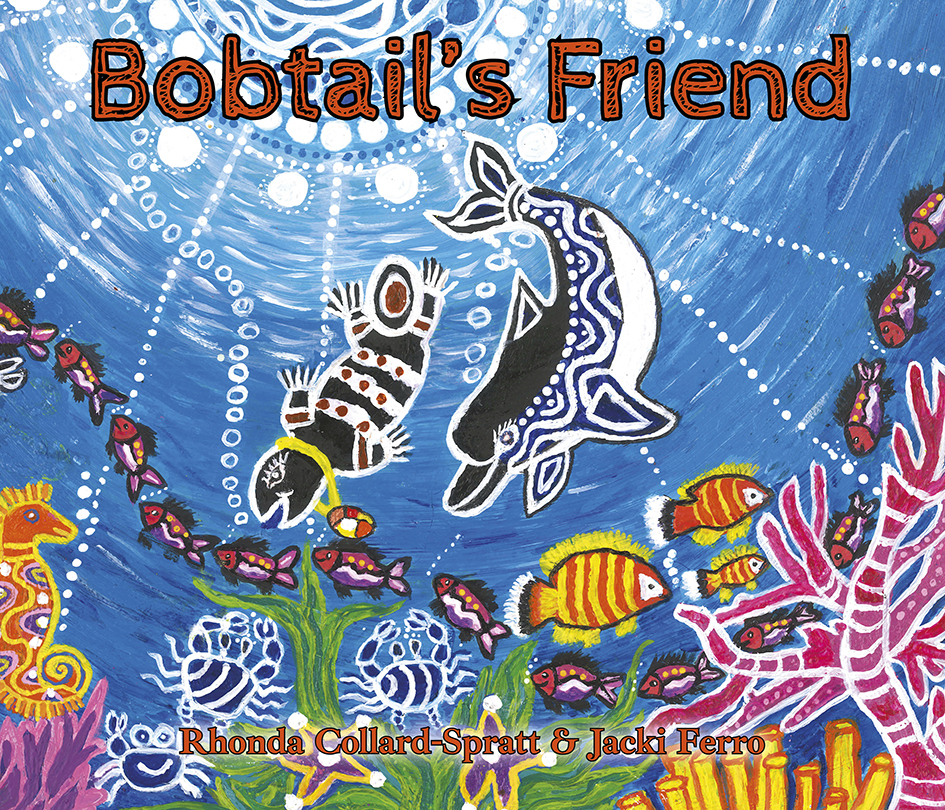
Bobtail’s Friend: From the Desert to the Sea is the second book in the Spirit of the Dreaming series written by Rhonda Collard-Spratt, Yamatji-Noongar artist, storyteller, poet and Stolen Generations survivor and Jacki Ferro with illustrations by Rhonda-Collard-Spratt and published by Boolarong Press.
In this beautiful, moving and empowering book set in spring time in Yamatji country that includes words from the Wajarri and Nhanda languages of Western Australia embedded throughout the story, a beautiful lesson is shared about the immense power of words and their capacity to hurt or heal. This story celebrates acceptance, the beauty in difference and friendship as well as demonstrates the impact of standing up to bullies. Central to the teachings in this story are the messages to be proud of unique traits, the skin you are in and to stand up against racism and bullying. Practice kindness and reach out to others who are alone or sad. This story highlights that showing compassion and playing a part in standing up to bullies can have a far-reaching ripple effect.
Aunty Rhonda’s striking and resplendent illustrations illuminate the double page spreads with each page deftly capturing the vivid colours and feel of the red and orange desert landscape and the bright azure blue water where the desert meets the sea. Aunty Rhonda uses bright, bold and vivid colours so the pages are pulsing with life and energy. Readers will delight in the detail on the Australian desert and sea animals. The illustrations include dot painting, patterns and fascinating eye-catching details to enrich the narrative.
A detailed review for Bobtail’s Friend: From the Desert to the Sea has been written in an earlier Reading Opens Doors blog post here
Buy Bobtail’s Friend: From the Desert to the Sea from Riley Callie Resources here. The audiobook version can be be purchased from The Spirit of the Dreaming website here.
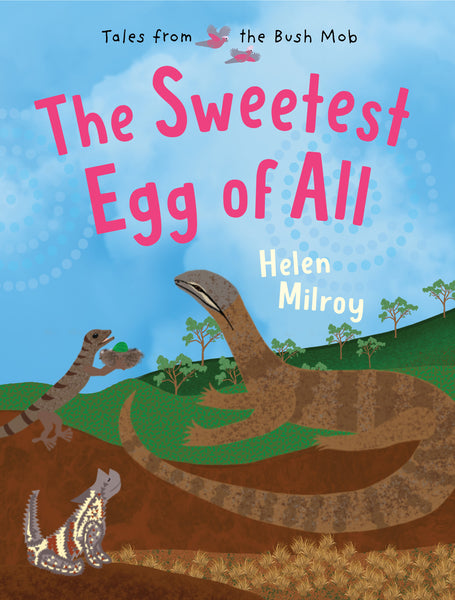
The Sweetest Egg of All by Helen Milroy, a descendant of the Palyku people of the Pilbara region of Western Australia and published by Magabala Books is the third book in the Tales from the Bush Mob series. This story contains a beautiful and timeless lesson about being kind. It highlights that members of a community, have a responsibility to work together, show compassion to each other and cooperate in a collegial manner. Being selfishly driven causes friction, division and is harmful. The Bush Mob show the beauty and power in helping each other, which often involves courage, resilience and wisdom, and the positive results this has for making a strong and harmonious community.
A detailed review has been written in an earlier Reading Opens Doors blog post here
Buy The Sweetest Egg of All from Riley Callie Resources here.
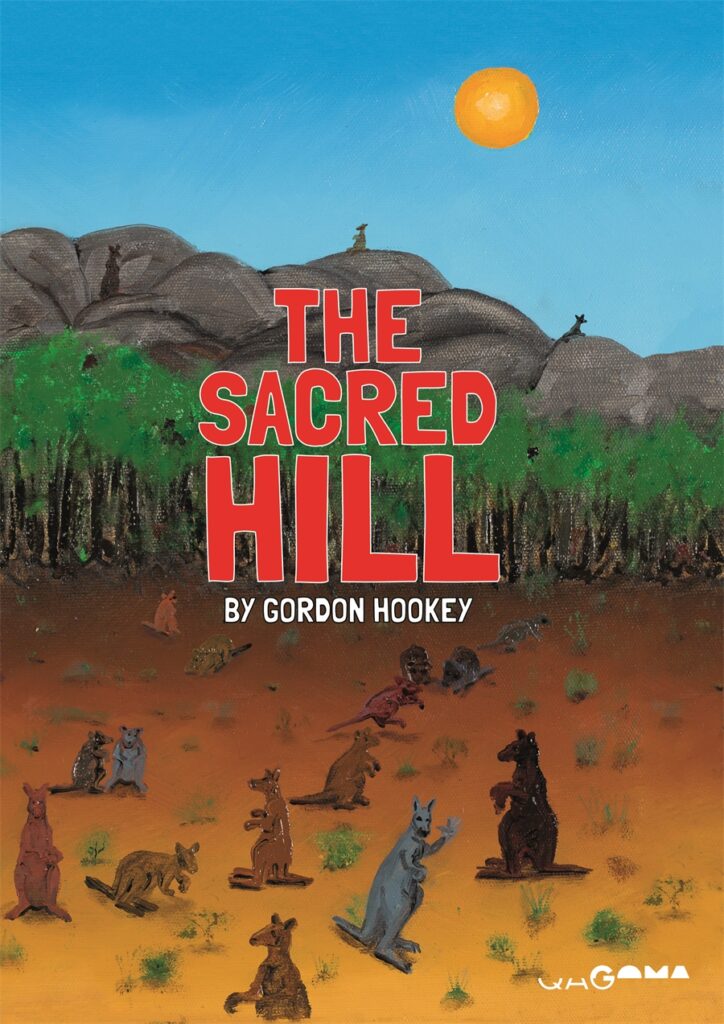
The Sacred Hill by Gordon Hookey, a Waanyi artist is a children’s picture book about the power of unity and coming together to achieve a goal; ultimately it is a powerful story about our shared humanity.
In this story, four different species of kangaroo live in four different areas on The Sacred Hill. Blue is a plains kangaroo, Rocko is the rock wallaby who lives at the top of the hill, Potsy a potoroo lives in the foothills and Treez is the tree kangaroo. Myna birds disrupt the peaceful existence of the kangaroos and drive them away from their land and homes. Since being forced off their land, the kangaroos feel isolated and lost. They each try to return to their home. One by one, each kangaroo is unsuccessful in their quest to return.
The kanagroos all enter a deep sleep and have the same dream. In their dream they see Clever Red, an old, wise kangaroo. The four kangaroos wake to see the spirit of this old kangaroo and Clever Red shares some powerful wisdom with the mob of kangaroos. He tells them they must unite and work together.
The story then explores the skills required for a team to work effectively and be successful. They have to mobilise, work together as one mob. Their teamwork, communication, carefully considered plans results in the kangaroos educating the Myna birds about their land, their home. The kangaroos are successfully able to educate the myna birds and challenge their thinking and ideas. This newfound understanding allows the myna birds that choose to stay on The Sacred Hill to live harmoniously with the kangaroos.
Greg’s boldly coloured illustrations illuminate the pages. They add another rich layer of meaning to the story and convey messages. The illustrations draw inspiration from history and politics. Greg includes pictographs and iconic symbols to tell more of this story about invasion, resistance, mobilising and uniting for the common good. Gordon’s sophisticated visual narrative lends itself to deep discussions.
This story is excellent to explore First Nations history and culture. Greg chose to use Kangaroos, a native animal to represent Aboriginal people and Myna birds, an introduced species as the colonisers.

Nyunti Ninti (What you should know) is a picture book that Bob Randall, an Anangu man from Uluru, wrote together with Melanie Hogan to share Bob’s knowledge and wisdom from the oldest continuous culture on earth. This thought provoking story explores Bob’s childhood memories and the deep connection to Country Aboriginal people have. This book explores the ways in which Aboriginal people live in harmony and sustainably with the land where everything is interconnected, hence the sense of responsibility and caring that guides and informs First Nations Australians. This story offers a way to connect with First Nations Australians knowledge, beliefs and wisdom. Nyuntu Ninti is based on the documentary, Kanyini, and this is where the text originated from as this book contains the words from the first half of the documentary.
This book is illustrated with photographs. Some of the photos are taken years ago, the black and white images representing the past. The book has been formatted in a way so that these older photos are blended with coloured contemporary photos of the landscape, highlighting the continuous history of Country and culture.
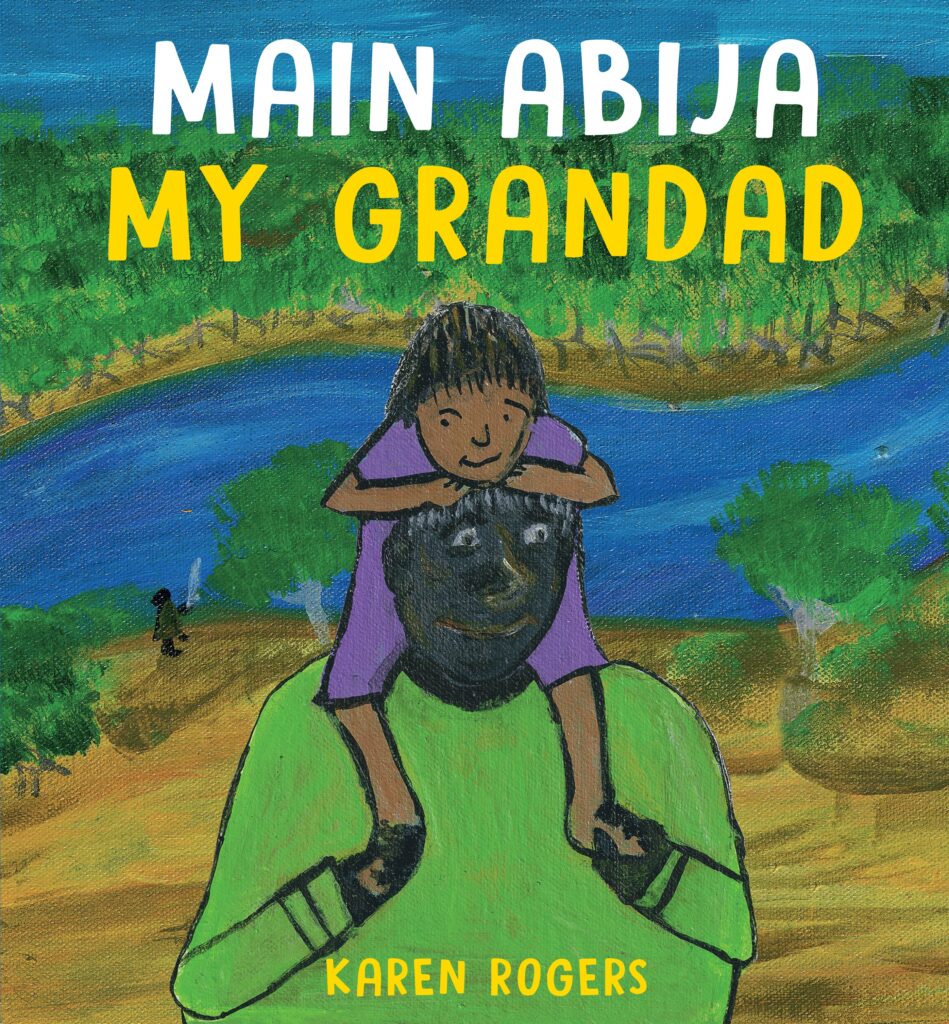
Main Abija (My Grandfather) has been created by Ngukkur artist and author Karen Rogers and honours the precious childhood memories Karen has with her beloved grandfather who taught her language, about the Dreaming, how to listen to Country, to source Bush Tucker and about her culture as well as her family. This story is told in Kriol and English and is a tender story about love and loss and celebrates a loving intergenerational relationship where a grandparent’s culture and knowledge are passed down through the generations. This story also provides a glimpse into life in remote communities.
Karen Rogers fondly recalls her school holiday memories where she spent time at her grandfather’s outstation, Wuyagiba in a remote part of the Northern Territory. Her grandfather taught her skills and passed on knowledge she has never forgotten. Her grandfather showed her how to source the sugarbag by teaching her the signs to look for and how to extract the honey. As a stockman, Karen had the opportunity to accompany her grandfather to the different stock camps.
She gives the reader clues into their beautiful relationship as she can still visualise her grandfather’s face when she was on his shoulders as a young girl and the joy he displayed when they were holding hands. He was there for her when her Mother was unwell and he cared for her during this time. Karen’s youngest daughter also had the privilege of learning all that her Mother did before her, how to hunt, fish and collect sugarbag.
Many readers will relate to the treasured relationship Karen Rogers shares with her grandfather and the time spent together making memories and learning together. This story is a beautiful gateway into rich discussions and a provocation for exploring memories, lessons learned from a grandparent or someone deeply respected, family stories, legacies and knowledge passed down through the generations. The publisher, Allen and Unwin have two clips of Karen Rogers reading her story – one in Kriol and one in English. These can be found here.

Charlie’s Swim written by proud Bardi woman Edith Wright and illustrated by Charmaine Ledden-Lewis, descendant of the Bundjalung people from the Clarence River and published by Magabala Books is a true story that honours the author’s selfless and courageous uncle, Charles D’Antoine, who showed enormous bravery during World War II. Charlie displayed such courage and altruism as he swam under attack during World War II in waters engulfed in flames to save a mother and her child.
A detailed review for Charlie’s Swim has been written in an earlier Reading Opens Doors blog post here
Buy Charlie’s Swim from Riley Callie Resources here.

Looking After Country with Fire: Aboriginal burning knowledge with Uncle Kuu by Victor Steffensen and illustrated by Sandra Steffensen is a picture book that educates young readers about the use of First Nations fire practices to manage the land.
In this story, Uncle Kuu spends time with children in the bush to observe what is happening in this landscape and look for signs from Mother Nature to determine ways to care for Country with fire. Uncle Kuu explains how and where to use fire in a way to protect the ecosystem. Uncle Kuu talks about creating a “cool fire” in a very specific area as this burns fuel, minimising the threat of more potent and destructive fires. Such uncontrolled fires would result in wide scale damage to old, large trees which would have dire, long-lasting consequences for the bush, its ability to rejuvenate and support the animals living there. Cool fires help protect the habitat for the animals and ensure the trees continue to seed, regenerate the land and enhance biodiversity.
Uncle Kuu delves into what happens when First Nations fire practices are not used and the devastating results for Country. He goes on to say that in recent times Elders have been consulted to teach communities about how to respectfully manage land with fire.
A detailed review for Looking After Country with Fire: Aboriginal burning knowledge with Uncle Kuu has been written in an earlier Reading Opens Doors blog post here.
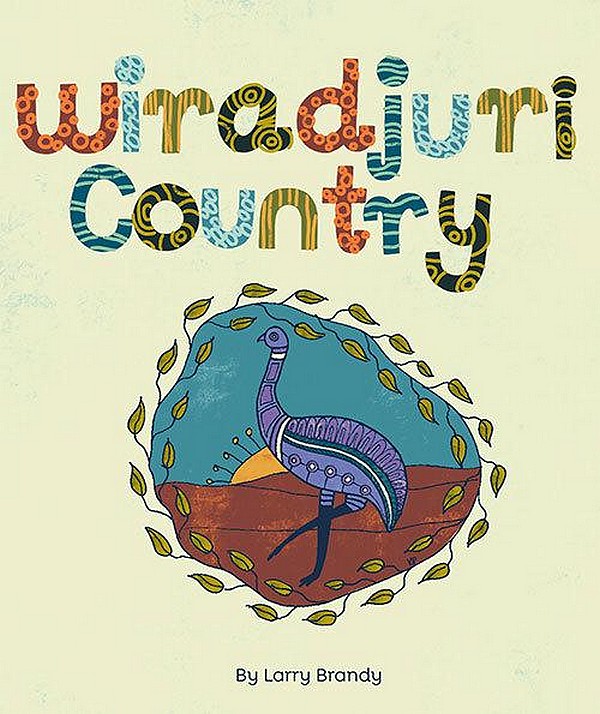
Wiradjuri Country by Larry Brandy, a Wiradjuri man from Condobolin in central New South Wales is a 2022 CBCA Notable for the Eve Pownall Award. This book begins with an introduction to the Wiradjuri Nation and includes a map of Wiradjuri Country. On the contents page there are five ecosystems listed (rivers, woodlands, grasslands, rocky outcrops and sky). Within each of these chapters the plants and animals in each of these environments are explored in detail. At the end of each chapter is a Wiradjuri story. In this book there is a wealth of information about language, history (including the impact of European settlement), culture and connection to Country supported by photographs (often annotated) and Aboriginal.
This book is brimming with interesting information and includes “deadly facts” boxes for the animals discussed. The layout is carefully considered with visuals on every page to support the text. Each chapter begins with Wiradjuri language, an explanation about the significance of the ecosystem to the Wiradjuri Country, the traditional practices and the ways in which they continue today as well as the state of the ecosystem today.
This is a unique non-fiction book which includes language, culture, Indigenous history and storytelling. The inclusion of the index of Wiradjuri words at the back of the book, with Wiradjuri to English and English to Wiradjuri is very handy.
Buy Wiradjuri Country from Riley Callie Resources here.
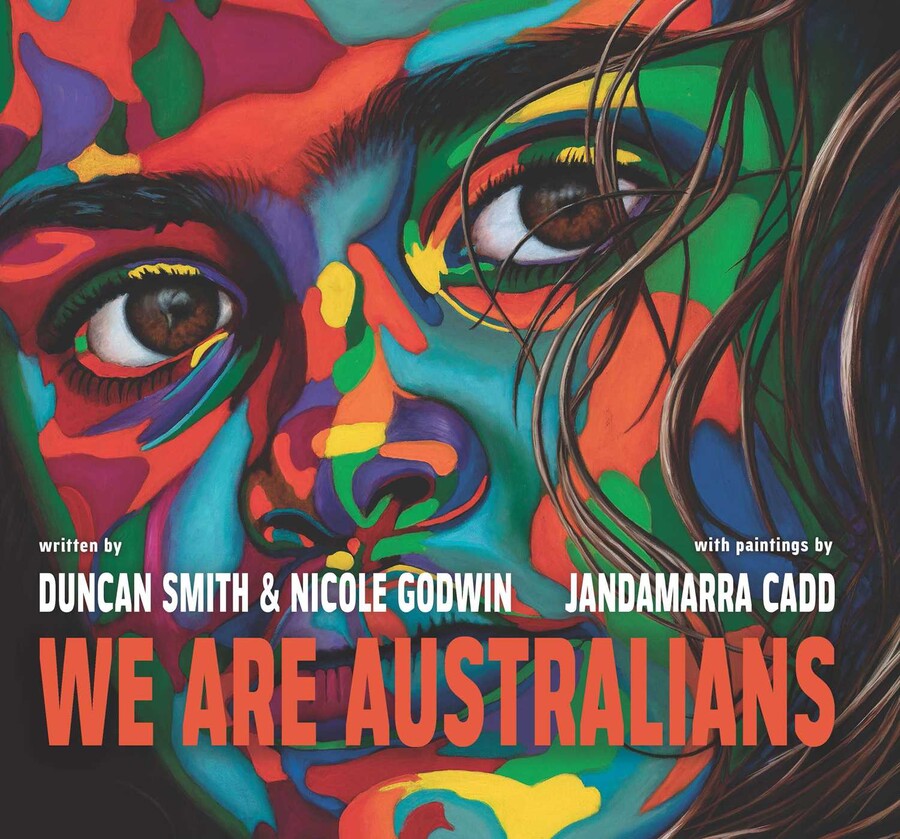
We Are Australians written by Duncan Smith and Nicole Godwin with paintings by Jandamarra Cadd and published by Wild Dog Books inspires readers to deeply reflect and consider their responsibilities as well as actions as citizens of the Australian community. It encourages readers to contemplate ways to stand together with fellow Australians. It highlights the importance of honouring the rich history and culture of First Nations People and learn from them, connect with them, hear their voices and learn about Australia’s true history.
A detailed review has been written in an earlier Reading Opens Doors blog post here.
Buy We Are Australians from Riley Callie Resources here.
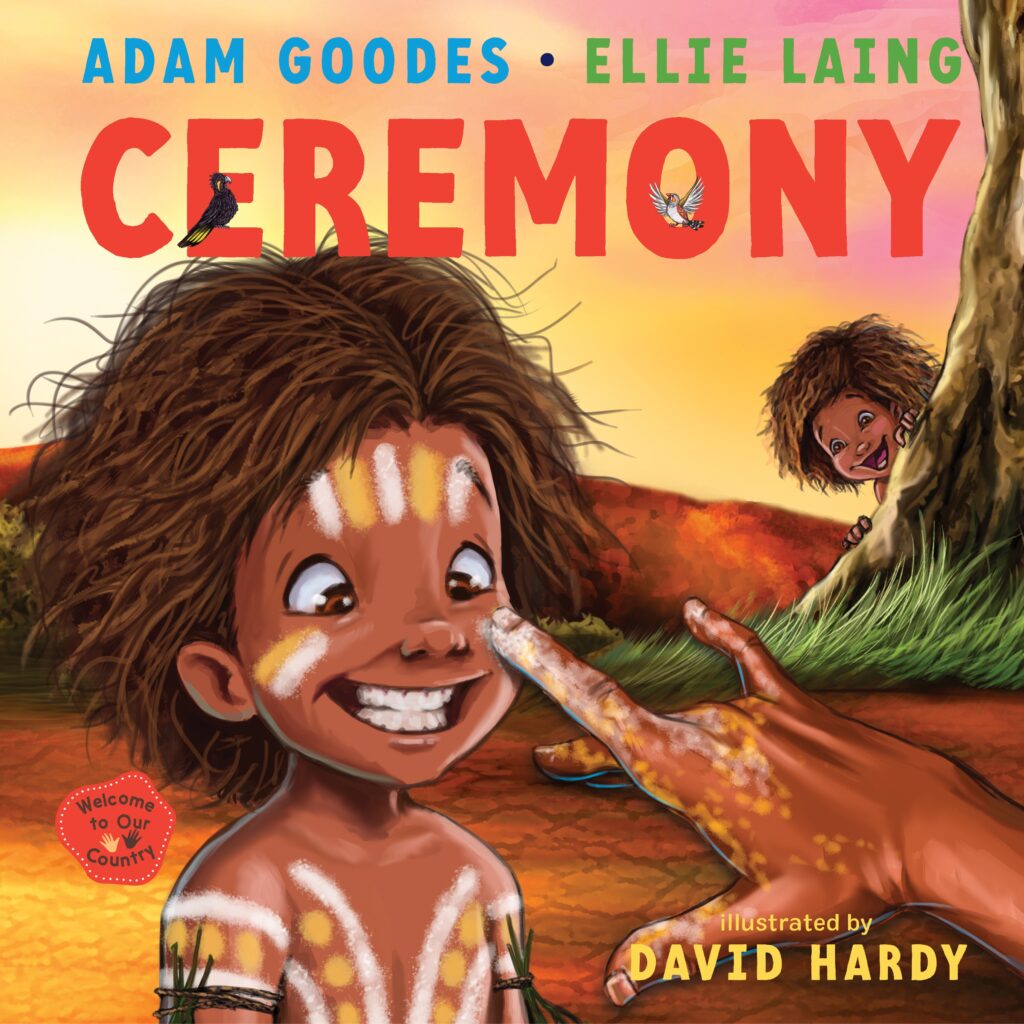
Ceremony: Welcome to Our Country by Adam Goodes and Ellie Laing and illustrated by David Hardy is a story about the connection to Country and jubilation that a highly anticipated ceremony brings – one rich in traditions, culture and family. This is the second book in the Welcome to Our Country series, the first being Somebody’s Land.
At the beginning of this book there is information explaining that there are over 350 First Nations groups and each group has their own languages and customs. It states this story is about a traditional ceremony from Adam’s Country, the Adnyamathanha people of the Flinders Ranges in South Australia. On this first page there is also a QR code to scan to listen to a reading of the story and glossary.
The endpapers feature illustrations to represent the Adnyamathanha words in this story; they serve as a visual glossary and also include the words written in English.
This story, told in four line rhyming stanzas, spans the entire day of the ceremony, from the morning when everyone rises with excited anticipation and happiness right through to the evening when a sense of contentment and connection is evident. The story begins with Adnyamathanha language and this is embedded throughout the book.
The children are the first to rise and are excited to wake their family because in the evening the Ceremony will take place. The bushland setting is green and serene teeming with lively animals. Preparations begin early on in the day as the fire burns to prepare the pit for the food. The females and males separate as each tend to their own jobs and roles. Everyone must then dress and have the ochre applied. David Hardy was meticulous in his research and this is evident in all of the illustrations, he was particular to ensure the Flinders Range scenery and environment was accurate as well as the face paintings and markings.
The ceremony begins with music and the males using the clapsticks, then the girls joyously perform traditional dances. The illustrations add an element of humour as they enrich the text with the children’s antics, light hearted cheekiness and utter delight. Elders tell stories, children listen around the fire. There is much laughter. Everyone shares a meal as the stars pepper the sky and the full moon glows. Stories told on this special day are tucked into everyone’s hearts for future sharing. This series has been created to introduce children to First Nations history and does so in a highly engaging and informative way. This book would make an invaluable addition to any collection.
Buy Ceremony: Welcome to Our Country from Riley Callie Resources here.
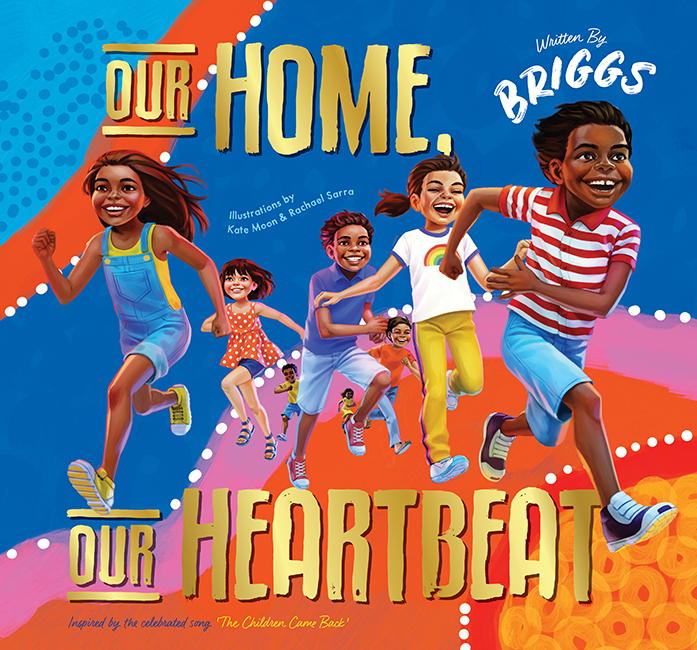
Our Home Our Heartbeat by Adam Briggs and illustrated by Kate Moon and Rachael Sarra inspired by Adam Brigss’ song, ‘The Children Came Back’ which is a sequel to Archie Roach’s song, ‘Took the Children Away’, is an uplifting celebration of First Nations people past and present, their achievements, success and contributions to Australia and on the world stage across a diverse range of fields. This book is a call to action to emerging generations that strength lies in the history of the oldest continuous culture on earth. It is a source of inspiration and a “rallying call to emerging generations forging their own path”. Inclusivity is at the heart of this book.
This story begins on the endpapers which feature portraits of twenty-one First Nations people. Straight away a connection can be made – a face can be put to a name and a host of role models can be seen, First Nations people to look up to and be inspired by. These twenty people inspire readers to dream big because they have proven that dreams and greatness can be achieved.
This book features children with different physical abilities and different skin tones walking in the shoes of Aboriginal ‘greats’, seeing themselves in them. These children are emulating their heroes, such a powerful story for positive representation.
The illustrations are bold and vibrant with each of the characters taking centre stage on a coloured and patterned background.
Throughout the story, there are themes relating to connection and community and at the end of the book this message is strengthened when the reader sees the power that comes from connecting with the past, culture and family.
At the end of the book there is further information about each of the twenty-one “Indigenous legends past and present”.
Buy Our Home Our Heartbeat from Riley Callie Resources here.
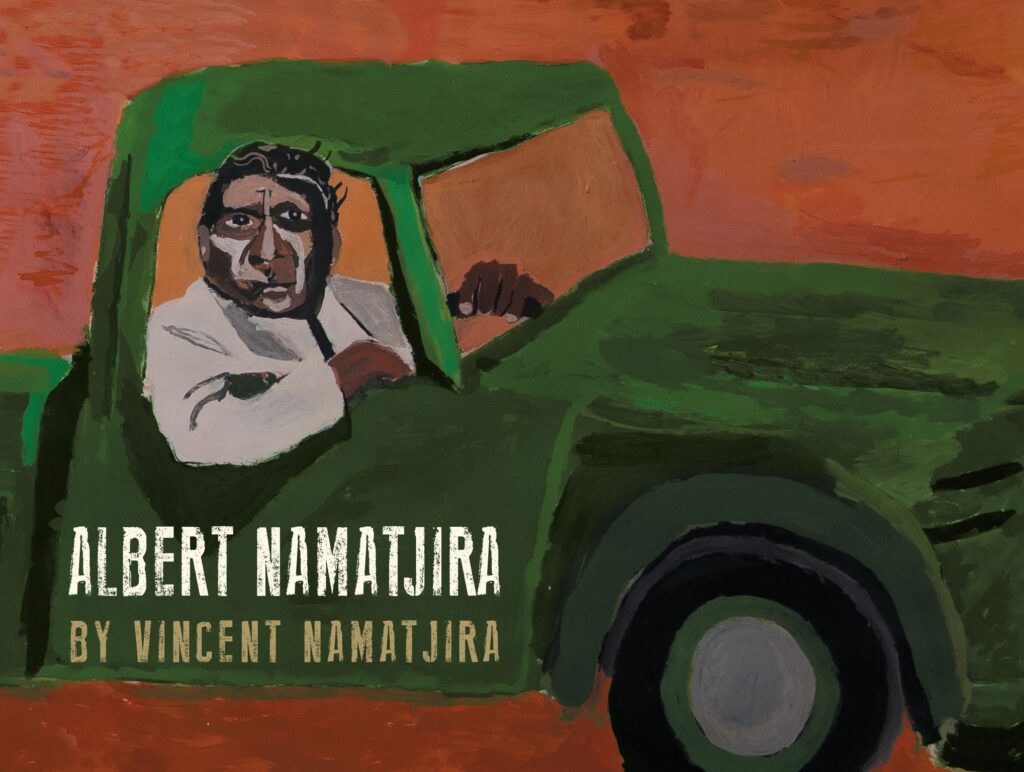
Vincent Namatjira sensitively and evocatively wrote the story of his great grandfather, Albert Namatjira, one of Australia’s most important artists in this picture book biography. Vincent shares details about Albert’s pivotal moments in his life and in doing so the reader gains an insight into the gross injustices First Nations Australians faced and the mistreatment Aboriginal and Torres Strait Islander Australians were subjected to. Vincent explores Albert’s early years and how his talent as an artist and craftsman were evident early on in the creations he made and painted in his community. Albert was later introduced to landscape painting from a Melbourne artist, Rex Battarbee, who visited Central Australia.
Albert’s creativity and talents were admired by sell-out crowds at his exhibitions. Albert’s paintings which travelled around the country for his exhibitions meant people in the cities were able to obtain a glimpse into Aboriginal life in the outback. Albert’s fame escalated and captured the attention of the Queen. He was awarded the Queen’s Coronation medal in 1953. Three years later a portrait of Albert painted by William Dargie won the Archibald Prize.
In a tragic turn of events, Albert sustained an injury while working on his car and damaged his hands, his most important and vital tool he used to paint. This injury was deeply troubling for Albert and not an easy time for him to navigate.
At this time First Nations Australians did not have the same rights as non-Indigenous Australians. Albert was the first Aboriginal person to be made an Australian citizen in 1957. Citizenship gave Albert the ability to vote, own land, build a house and buy alcohol. The law was very strict and prohibited Albert from buying and sharing alcohol with any other Aboriginal people including family members and friends. Albert supplied alcohol to an Aboriginal person and was sentenced to prison. This was devastating for him.
Tragically, Albert passed away in a hospital in Alice Springs due to health issues in 1959.
Vincent Namatjira is a Western Aranda painter from Indulkana in South Australia and he was the first Indigenous artist to win the Archibald Prize in 2020 with a portrait of Adam Goodes. Vincent’s paintings enrich the narrative and represent a visual timeline of key moments in Albert’s life. They also reveal information to readers about what life was like for Albert socially and in his work, the challenges he faced caught between two different cultures and sets of rules as well as the injustices that permeated his life. The text and paintings deftly reveal the importance of Country, family and kinship to Albert. The words have been paired back leaving room for the reader to reflect about Australia’s treatment towards Aboriginal and Torres Strait Islander Australians.
Albert has left behind an unrivalled and remarkable legacy in his paintings that can be appreciated in Australian museums and galleries today.
Buy Albert Namatjira from Riley Callie Resources here.
Many of these titles are available through Riley Callie Resources and the books that are have been linked to this shop. By purchasing through the Reading Opens Doors blog, you are supporting Debbie Hoger, a Dunghutti woman and founder of Riley Callie Resources as well as Reading Opens Doors, as I receive a small commission for any transactions made. Thank you so much for supporting our businesses.
